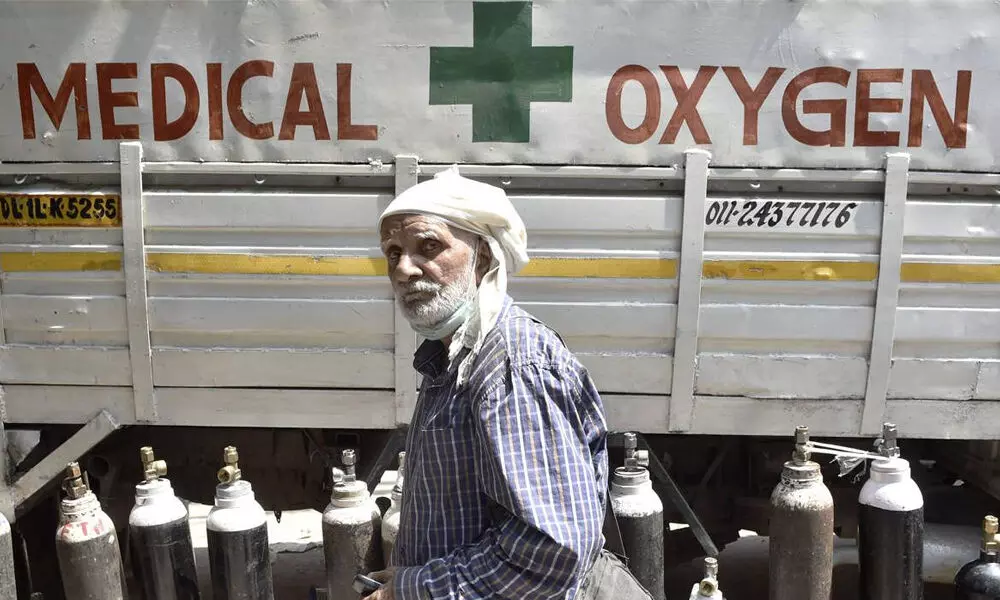Oxygen shortage: Why it's crucial to fighting Covid-19
image for illustrative purpose

The desperate scenes playing out in India may foreshadow a dangerous new phase of the pandemic where people die in droves, not of the disease so much as a lack of proper medical care. The situation could get a lot worse thanks to a sudden shortage of medical oxygen in the country.
Oxygen is one of most straightforward and proactive ways of treating the disease, which causes hypoxia. When patients begin gasping for air, a steady supply of concentrated oxygen does wonders.
It may seem like an obvious treatment in hindsight, yet it took nearly two centuries to overcome strange theories, outright quackery and trench warfare in the medical community and beyond.
Oxygen's history in medicine begins in the 1770s, when the Swedish pharmacist Karl Scheele and the British scientist Joseph Priestly independently isolated oxygen gas. Priestly unfairly received the lion's share of the credit.
To make matters worse, Priestly was a believer in phlogiston, an invisible substance allegedly released during combustion. What we call "oxygen," he called "dephlogisticated air." When he breathed it, his chest felt "peculiarly light and easy for some time afterward." Priestley subsequently bragged in a scientific tract that "only two mice and myself have had the privilege of breathing" the miracle gas. Since the new substance seemed to make candles burn brighter, Priestley speculated that it might be "peculiarly salutary to the lungs in certain morbid cases, when the common air would not be sufficient to carry off the putrid effluvium." Yet he remained wedded to his phlogiston theory, warning that breathing pure oxygen might also carry dangers – that it might be the equivalent of burning the candle at both ends. Eager to test the effects of the new substance on patients, Priestley and other engineers and scientists, including James Watt, founded the Pneumatic Institution in Birmingham. Though they made no promises of a cure, they offered to treat a range of maladies – including "obstinate venereal complaints" – with dephlogisticated air.
They weren't very successful, but there was an upside. As one medical historian has noted, this unlikely crew managed to invent most of the oxygen-delivery apparatus still in use today, from mouthpieces to corrugated, non-crushable breathing tubes to methods for mass-producing the gas.
The Pneumatic Institution went defunct, but oxygen lived on as a quack remedy. Most of these treatments didn't actually use concentrated oxygen, dispensing nothing more than mixtures of gases not so different from ordinary air, typically a few gulps' worth and nothing more. But that didn't stop purveyors of these panaceas from making ludicrous claims for their products. Makers of the so-called "Oxygen Treatment," a typical remedy from 1884, sent patients one bottle of "Oxygen" and one bottle of "Oxygen Tonic." This was supposed to treat everything from dyspepsia to arthritis for two full months.
By the late nineteenth century, oxygen therapy was synonymous with quackery. In 1890, though, a physician named Dr Alfred Blodgett had a patient with pneumonia whom he deemed "irrevocably doomed." In the hopes of merely easing her final moments, he hooked her up to an oxygen cannister, turned on the gas – and left it running.
This may have been the first continuous application of oxygen to a patient in history. To Blodgett's astonishment, the woman stabilized, her breathing becoming regular. He published his results, arguing that oxygen could save lives. "Many cases will be found in which the period of greatest danger may be safely tided over which would otherwise unquestionably be lost," he wrote.
And yet this was just the very beginning of oxygen's resurrection. After Blodgett's article, other researchers tried administering oxygen, but not via the lungs. They pumped it under the skin, up the urethra and into the stomach. Most bizarre of all was the idea of an oxygen enema, which came courtesy of corn-flake promoter Dr JH Kellogg, who also gained fame for popularizing medical treatments of questionable value. (Bloomberg)

